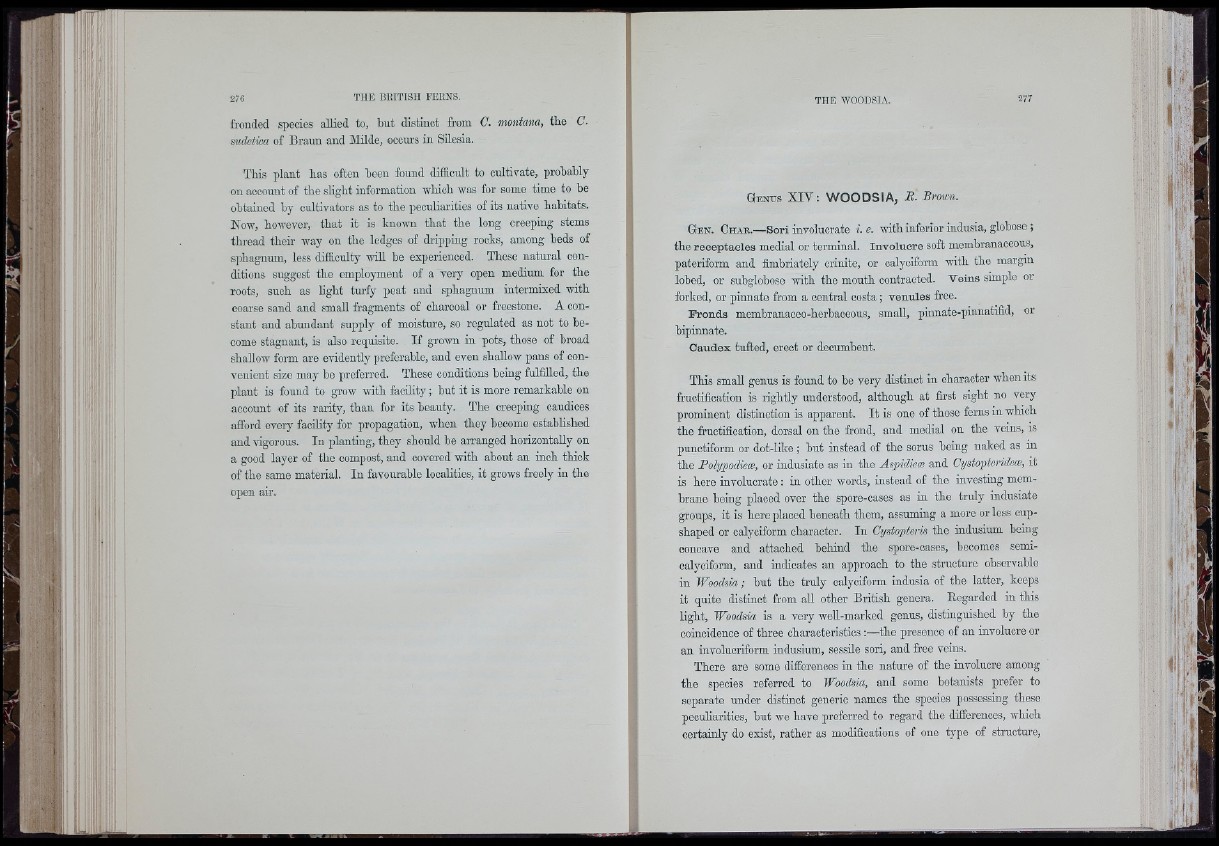
1/
iri ti
iri
li'
I'ri:;
i l
iri:!
iïi‘<
fronded species allied to, but distinct from C. montana, tbe C.
sudetica of Braun and Milde, occurs in Silesia.
Tbis plant has often been found difficult to cultivate, probably
on aooount of tbe sHglit information wHcb was for some time to be
obtained by cultivators as to the peculiarities of its native habitats.
Now, how'evor, that it is known that tho long creeping stems
thread thoir way on the ledges of dripping rooks, among beds of
sphagnum, less difficulty will he experienced. These natural conditions
suggest the employment of a very open medium for the
roots, such as light turfy peat and sphagnum intermixed with
coarse sand and small fragments of charcoal or freestone. A constant
and abundant supply of moisture, so regulated as not to become
stagnant, is also requisite. If grown in pots, those of broad
shallow form are evidently preferable, and even shallow pans of convenient
size may bo preferred. These conditions being fulfilled, the
plant is found to grow with facility; but it is more remarkable on
aooount of its rai%, than for its beauty. The oroeping oaudioes
afford every facility for propagation, when they become established
and vigorous. In planting, they should he arranged horizontally on
a good layer of the compost, and covered with about an inch thick
of the same material. In favourable localities, it grows freely in the
open air.
Genus XIV: WOODSIA, B. Brown.
Gen. Char.—Sori involúcrate ». e. with inferior indusia, i
the receptacles medial or terminal. Involucre soft membrauaoeous,
pateriform and fimbriately crinite, or oalyoiform with the margm
lobod, or snbglobose with the mouth contracted. Veins simple or
forked, or pinnate from a central costa ; venules free.
Fronds membranaceo-herhaceous, small, pinnate-pinnatifid, or
bipinnate.
Caudex tufted, erect or decumbent.
This small genus is found to he very distinct in character when its
fruotifioation is rightly understood, although at first sight no very
prominent distinction is apparent. It is one of those ferns in which
the fructification, dorsal on the frond, and medial on the veins, is
punctiform or dot-like ; hut instead of the sorus heing naked as in
the Polypodieoe, or indusiate as in the Aspidieæ and Cystopterideæ, it
is here involúcrate : in other words, instead of the investing membrane
being placed over the spore-cases as in the truly indusiate
groups, it is here placed beneath them, assuming a more or less oup-
shaped or oalyoiform character. In Cystopteris the indusium being
concave and attached behind the spore-oasos, becomes semi-
calyciform, and indicates an approach to the structure observable
in Woodsia ; hut the truly oalyoiform indusia of the latter, keeps
it quite distinct from all other British genera. Regarded in this
light, Woodsia is a very weU-marked genus, distinguished hy the
coincidence of three characteristics :—the presence of an involucre or
an involucriform indusium, sessile sori, and free veins.
There are some differences in the nature of the involucre among
the species referred to Woodsia, and some botanists prefer to
separate under distinct generic names the species possessing these
peculiarities, but we have preferred to regard the differences, which
certainly do exist, rather as modifications of one type of structure.
ity .
l i
iff
■ihi
I,
itil
I
'’4 ii
iff
riii!
.i
m
i i :